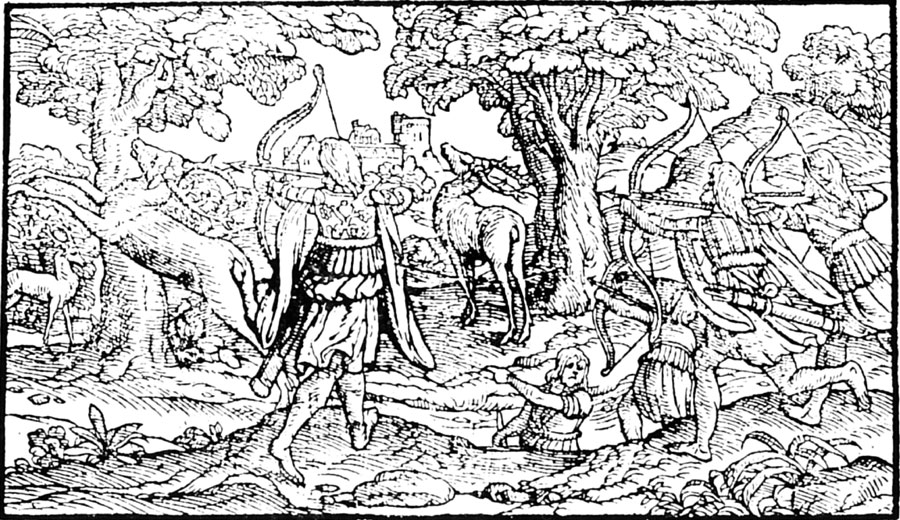
Highland Archers c.1577
Other Myths
Myth: All Scotsmen wear kilts.
I hear this frequently, that all Scotsmen wear kilts: highlander, lowlander, or even courtier, doesn't matter it seems. Well, yes, it does. Lowlanders are more likely to wear garments similar to the English, while courtiers often found inspiration in French fashions (that Auld Alliance). There is even commentary on how the Scottish nobility out dressed the English during the pre-nuptial events of Princess Margaret, which must have cost them dearly. However, in general, keep in mind that the Scots were not as wealthy as the English.
As to the Highlanders and West Islanders, the above image dates from 1577. It is one of handful from the 16th century, and the men above appear similar to the Irish in garment style. There was a lot of interaction with the Irish amongst the Highlanders/Islanders, so this is not surprising.
The Irish first recorded possible kilts around 1594 when Red Hugh O'Donnell describes a body of highland Scots who came to the Irishman's assistance in 1594 under a brother of Donald Gorm MacDonald and MacLeod of Harris. This is the translation from Irish Gaelic.
"They were recognized among the Irish Soldiers by their distinction of their arms and clothing, their habits and language, for their exterior dress was mottled cloak of many colours… with a fringe to their shins and calves, their belts were worn over their loins outside their cloaks."
Even this description is vague.
The great kilt was not a form clearly worn until the 17th century, when surviving images of kilts appear in the 1640s. Wearing a kilt is a theatrical call to distinguish the Scots from the Irish, and neither the modern kilt, nor the belted plaide is accurate for most of the 16th century.
And in general, there is not as much information available regarding the dress of the Scotsmen, and even less for Scotswomen.
Image and quote taken from Old IHighland Dress and Tartans by
H.F. McClintock. Dundalgan Press, Dundalk, 1949.